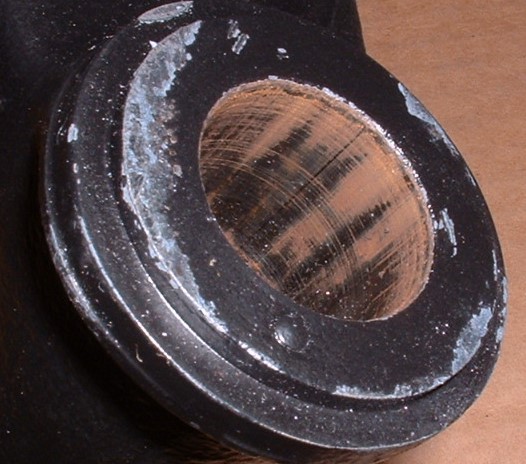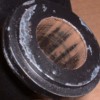My system is a bit different. I gun-drilled the lower studs about 4" deep x 1/8" ID on both ends and put in zerks ala Hall. To grease both sides of the central spacer from this point to keep condensation & corrosion at bay, I drilled holes thru the spacer, grooved it and filed notches on both its flat ends so grease has a path to both sides of the spacer, the bushings and the long pivot stud.
Otherwise with this setup, grease has no clear path to both sides of the spacer, as it's ends ride hard against the end caps due to nut torque. The OEM spacer is the actual bearing surface riding in the bushings for the rear suspension, while the long stud is only a tie-bar for the assembly and doesn't move once tightened.
OEM spacers are hardened high-carbon steel which is very sensitive to rust/corrosion, while the long shaft is low-carbon steel but still rusts every chance it gets. I have a couple of stock spacers that are so badly pitted, they would tear up any bushings I installed. The 'grease' was like brick dust.
So I made grooved, drilled spacers of 316 stainless to cure the condensation problem that corrosion-locks the ID of the spacer to the OD of the pivot stud. There also seems to be a lot of dead space inside the assembly- it takes quite a few slow pumps of grease to purge all the air out past those o-rings; pumping too fast might rupture the rubber. So far it all seems to work fine- everything is nice 'n greasy on disassembly.



